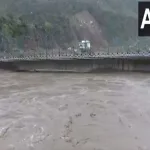EARTHQUAKE FACTS
An Earthquake is a sudden & violent shaking of the ground, often caused by movements of tectonic plates beneath the earth’s surface. Earthquakes typically occur near fault lines, which are fractures in the earth’s crust where stress from plate movements accumulates. The San Andreas (Californian) fault is called the earthquake capital of the world. It has lots of earthquake every year.
Till now we are not in a position to inform or to educate people on what causes these earthquakes &what precautions they have to take before, during &after the quake. The need of the time is to educate people & make them prepare to face such disasters which are in store which cannot be prevented & which may strike anytime, any part of the surface of Earth.
Key Earthquake Facts
There is a 100% chance of an earthquake all 365 days of the year. There are thousands each & everyday, & millions in a year. Luckily, most are too small to feel. About 60 a year are large enough to cause damage.
Earthquakes often come in a series. The largest quake is called the mainshock. Aftershocks are earthquakes that follow the largest shock of the series. After an earthquake, rocks under the crust readjust, causing more shaking. These aftershocks are smaller than the mainshock, but they can cause buildings that are already damaged to collapse. Aftershocks can happen minutes, hours, even days after an earthquake.
Before electronics, the Seismograph recorded the size of the vibrations of the earth to help scientists figure out the strength of Earthquakes. The Seismograph is a drum covered with paper, the drum is always spinning. When the earth shakes, the pen makes a wavy line on the paper. The longer the wavy line & the closer they are together, the stronger the earthquake.
For decades, the size or the magnitude of earthquakes is measured by its magnitude on the Richter Scale. The Scale starts at Zero & includes decimal points. The higher the number is, the stronger the earthquake.
Earthquake that measures 2 or under is called a microquake. In 4.5 quake you can feel the ground shake. By 6 the earthquake is so strong, buildings can collapse. Each time the number increases by ten times on the scale. The earthquakes with the highest magnitude (numbers) are powerful & devastating. The largest recorded (9.2Mw) earthquake in USA struck Prince William Sound, Alaska, on March 27,1964.
An earthquake begins at the Hypocenter-it is where the shift or break in the rock happens, that could be more than 885km below the earth’s surface. The epicenter is the spot on the earth’s surface that is right above the Hypocenter.
Earthquakes can be classified on the depth of their focus (Point of origin) as shallow focus earthquake depth 00- to 70km, these are most common & most destructive due to closer to earth’s surface; Intermediate focus earthquake with depth range 70 – 300Km cause less damage than the Shallow ones & the deep focus earthquakes that usually cause less damage due to their depth, the depth is from 300 to 700Km. These classifications help the scientists to understand the nature of the quake & its potential on the earth’s surface.
There are hundreds of GPS stations throughout the world. Antennae from these stations are connected through cable wires to computers all the time. GPS can measure the size of an earthquake by examining how much a station was moved during a seismic event, it compares its position before the quake to where it is after the quake.
An earthquake begins at the Hypocenter-it is where the shift or break in the rock happens, that could be more than 885km below the earth’s surface. The epicenter is the spot on the earth’s surface that is right above the Hypocenter.
The Kashmir Valley is intermontane fault Basin with a sinking tendency & the mountain belt has a rising propensity – these are the main factors responsible for the Paleogeography of the region. The Kashmir Valley is of tectonic nature resulted due to vertical displacement right from the time of uplift of the Pirpanjal to the present day. The Paleogeography/Depositional environmental studies of the Lake Deposits at Buta Pathri (Gulmarg) reveal that initially the Monsoon winds were having an easy approach to the Kashmir Valley.
Most of the earthquakes which are felt in the Valley have their epicenters in the Hindukush Region which is mostly faulted one where 1-2 quakes happen after every six minute. These earthquakes are deeply seated.
Most of the settlements in the Hilly areas of J&K are confined either to the older river terraces or to the Hill slopes which are vulnerable to landslips, debris flows or shooting stones. People rush to elevated areas to avoid flash flood (as in 2014) but nature do not spare them even there where severe seismic activities strike the region.
Safety measures during an Earthquake
We cannot conquer nature, Earthquakes are called mother of all disastrous. Earthquakes have now become challenge to life on land. Natural hazards are sobering reminders. Experts says there are instruments with the help of which prediction upto 30-35 seconds is possible & such a time is sufficient to take rescue. In the event of an earthquake safety is a priority.
Here are the key steps to follow:
- IF YOU ARE INDOOR: Take cover under a piece of furniture-a big desk or table – until the shaking stops & it is safe to exit. Avoid doorways, they are not safer than other areas. Do not go outside. Objects could be falling all around.
- IF YOU ARE OUTSIDE: Find a clear area away from buildings, trees, wires & streetlights – & stay there.
- IF YOU ARE IN A VEHICLE: Stay away from bridges, overpasses & Tunnels. Stop in a safe area & stay in your vehicle until the shaking stops.
After the Earthquake
Check yourself for injury, if your building is damaged or unsafe leave carefully. Everyone should Stay calm; be prepare for aftershocks, listen to emergency broadcasts on radio or phone for instructions from authorities. Teachers Please do not take your class into earthquake damaged buildings.
Earthquakes as such are not dangerous. It is obtaining nature & manmade conditions that decide how damaging an earthquake could prove. To reduce the disastrous effects of an earthquake, the only solution till day available is its prevention. Because it has not yet been possible to predict the arrival of an earthquake. Even if it becomes possible one day, still the buildings have to be structurally sound for bearing the effects of seismic loads.
Historical Earthquake Events in Kashmir
Kashmir is located in a seismically active region at the junction of the Indian & Eurasian tectonic Plates has experienced several significant earthquakes throughout history. Kashmir Valley is intermontane fault Basin with a sinking tendency. The Kashmir part of the Himalayan belt too has suffered damaging earthquakes. This Mt. belt has rising propensity, unfortunately falls in the seismic Zone IV and V which is highly vulnerable to earthquakes. Here are some of the notable seismic events:
There is general opinion that the earthquake of 1515 was the highest magnitude (7.6-7.8) though not based on very sound grounds, that hit the Kashmir Himalaya.
The earthquakes that jolted Srinagar include those of 1735, 1778, 1785, 1803 & 1828. Of the virous quakes which occurred in the Valley, the earthquake of 1885 (magnitude 6.3), location-Tantripur Jampoora ( Baramulla Pattan), death toll 3000, is considered to be the most disastrous as per the available records. The effects of this quake ( May 30,1885) is described by E R Jones, concluded the heavy loss of life due to the insecure manner of buildings in vogue.
Although the epicenter of the Earthquake of 1905 was in Kangra (H P) the tremors felt in Kashmir caused considerable damage to buildings & infrastructure, highlighting the vulnerability of the region.
In 1963 an earthquake of 5.1 Magnitude occurred in Budgam at Kulbugh where artesian conditions & heavy dust blows were witnessed. In the capital city of Srinagar situated 13Km Northeast of the epicenter tract the quake was felt as a severe shock with to & fro motion.
The other quakes witnessed in the Valley include those of 1967 ( Shangas Anantnag), June 8,1989 of Pampore. The possible causes of the quake was the activation of the Fault along the River Jehlum & cross faults responsible for the formation of knee band menders of R. Jehlum near Pampore.
One of the most devastating quake in the history of Kashmir occurred on Oct. 8,2005 with its Magnitude of 7.6. The earthquake led to a massive humanitarian crisis with relief efforts mobilized both locally & internationally. The event highlighted the need for better earthquake preparedness, infrastructure in the region & preparation of micro-seismic zonation Map. There after Kashmir Valley frequently experienced smaller seismic activities serve as a reminder of the region’s vulnerability like one that lasted for 20 sec. on Feb.2 2009.
The recent two consecutive Earthquake August 20, 2024 magnitude of 4.9 & 4.8 its epicenter Baramulla underscores the regions significant seismic vulnerability. This seismic activity is particularly concerning as the area is Geologically fragile, form a part of the Jehlum basin composed of Recent to Sub-recent alluvium, moraines & outwash sediments in the form of alluvial fans either loose or unconsolidated & highly saturated with water with elevation by & large 1600m (amsl). These recent tremors serve as a reminder of the importance for preparedness & infrastructure resilience in the region.
Prevention and Safety Measures
Earthquakes as such are not dangerous. It is obtaining nature & manmade conditions that decide how damaging an earthquake could prove. To reduce the disastrous effects of an earthquake, the only solution till day available is its prevention.
It has not yet been possible to predict the arrival of an earthquake. Even if it becomes possible one day, still the buildings have to be structurally sound for bearing the effects of seismic loads.
We cannot conquer nature, Earthquakes are called mother of all disastrous. Earthquakes have now become challenge to life on land. Natural hazards are sobering reminders. Experts says there are instruments with the help of which prediction upto 30-35 seconds is possible & such a time is sufficient to take rescue. In the event of an earthquake safety is a priority.
( The Author is Senior Geologist at Geology and Mining Department, J&K Government)








